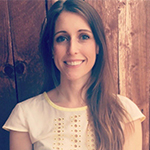No Records Found
Sorry, no records were found. Please adjust your search criteria and try again.
Google Map Not Loaded
Sorry, unable to load Google Maps API.
- Stacey
- Landberg
- No
- 301 E Del Mar Boulevard
Pasadena
California
91101
United States - Chatter House Speech Therapy, Inc.

Pasadena
California
91101
United States
Speech development doesn't happen in isolation—childhood apraxia of speech (CAS) can affect many areas of a child's growth, including social-emotional development, regulation, language, and more. With extensive post-graduate training in evidence-based practices for children with apraxia, I integrate multi-sensory approaches, such as ReST, DTTC, AAC, and others, tailoring them to meet each child's unique needs. My individualized approach ensures that every child receives the right blend of strategies for optimal progress.
Beyond my apraxia-specific expertise, I have advanced training in global child development and mental health, which equips me to holistically support both the child and their family's emotional well-being. With 20 years of experience, I've successfully helped many children not only improve their speech production but also gain the self-confidence necessary for meaningful communication.
My philosophy centers on supporting a child's global well-being throughout the speech therapy journey. By focusing on each child's strengths rather than deficits, I help them achieve small communication successes early on, fueling their intrinsic motivation and accelerating progress. My deep understanding of apraxia enables me to customize treatment approaches—whether it's cueing hierarchy, trial pacing, or generalization techniques—so that each child can experience sustainable growth, both in speech and in life.
As a mother, I deeply understand that each parent has expert knowledge of their own child. I approach therapy with a growth mindset, eager to learn about your family’s priorities and your child’s communication strengths and needs. My goal is to create a collaborative environment where your insights, joint problem solving, reflection, and home practice all play a crucial role in supporting your child’s development and progress.
I actively encourage parent involvement because I believe that together, we can achieve the best outcomes. With my expertise in how both children and adults learn, I’ve had the honor of being a national guest speaker on parent coaching and effectively incorporating caregiver participation in the therapy process. Through our partnership, we can work toward a shared goal—your child’s ability to successfully connect and communicate meaningfully with others.
In addition to my direct work with families, I co-run a worldwide parent support group, Apraxia Space, where parents can connect, share experiences, and gain resources even if they do not work with me directly. I invite you to join our community, where you’ll find support from other parents on a similar journey and access to helpful insights tailored to children with apraxia.
One of the great benefits of AAC (Augmentative and Alternative Communication) is that, unlike intensive speech practice, there are no prerequisites or requirements to use it. Children can immediately benefit from having a way to express themselves, whether through pictures, gestures, or technology, regardless of their current speech abilities. This immediate access to communication can significantly reduce frustration and support their overall language development. While my area of expertise involves improving children's motor speech planning and execution, I fully support them to access language in any way possible (e.g., signs, gestures, AAC, writing, etc.). In therapy, I also incorporate signs and movement gestures. While specific signs may not always stick, pairing motor movements and tactile cues with sounds has proven to be incredibly helpful for many children to remember specific sounds and increase their independent communication. For those who use high-tech AAC devices, these tools are a powerful way to support language growth and provide an additional avenue for communication success, which I do incorporate into our sessions -- tailored to each child. I will also use core boards, visual schedules, and other visuals to serve as an additional layer of support, to reduce frustration, and to provide helpful visual cues during therapy sessions. While I’m not an AAC specialist, I frequently collaborate with AAC experts and refer families to AAC specialists when more support is required.




